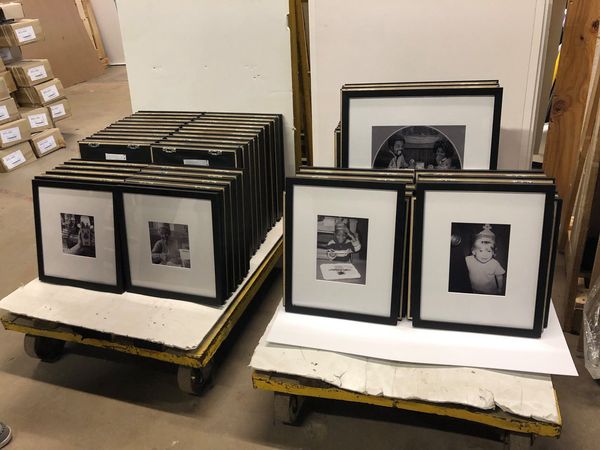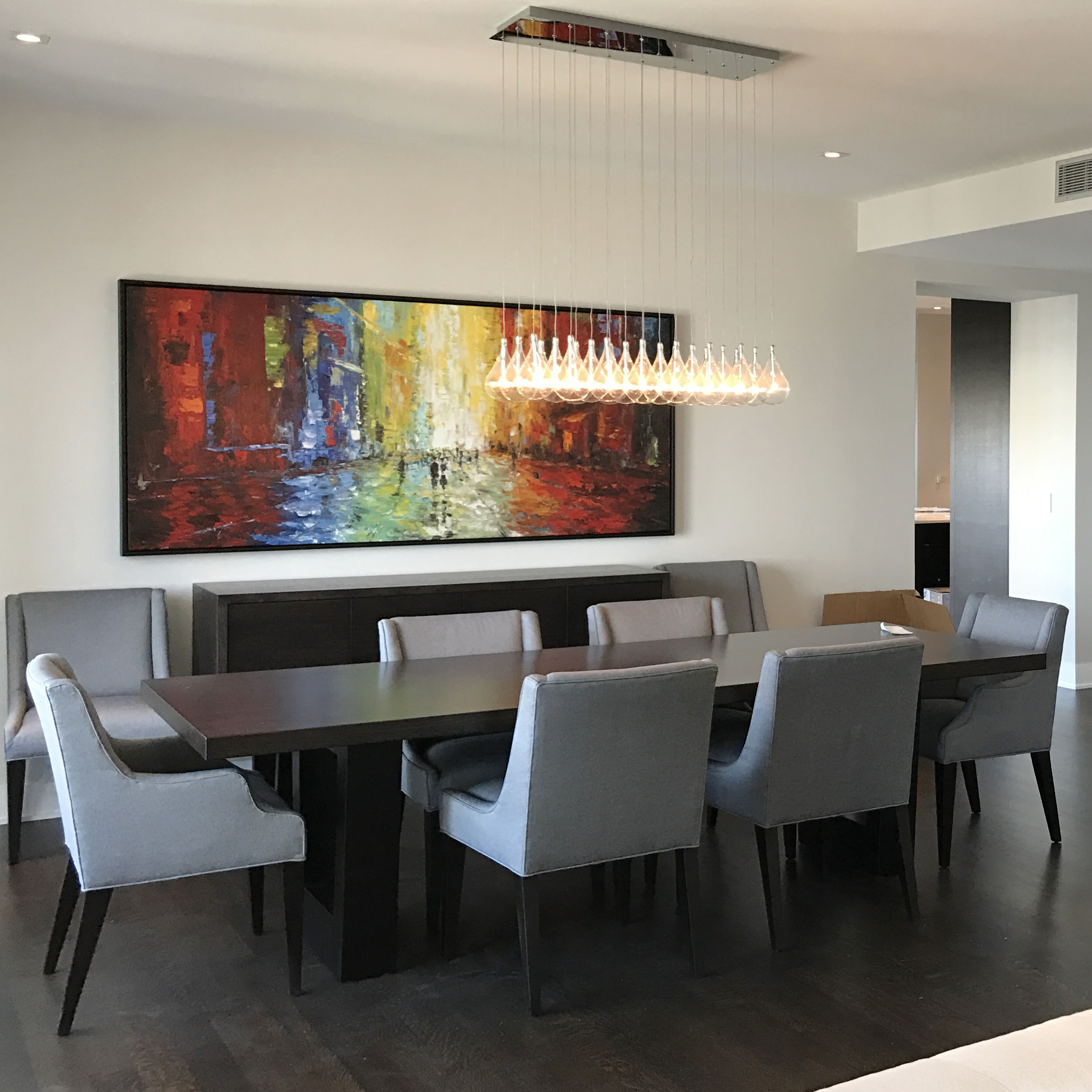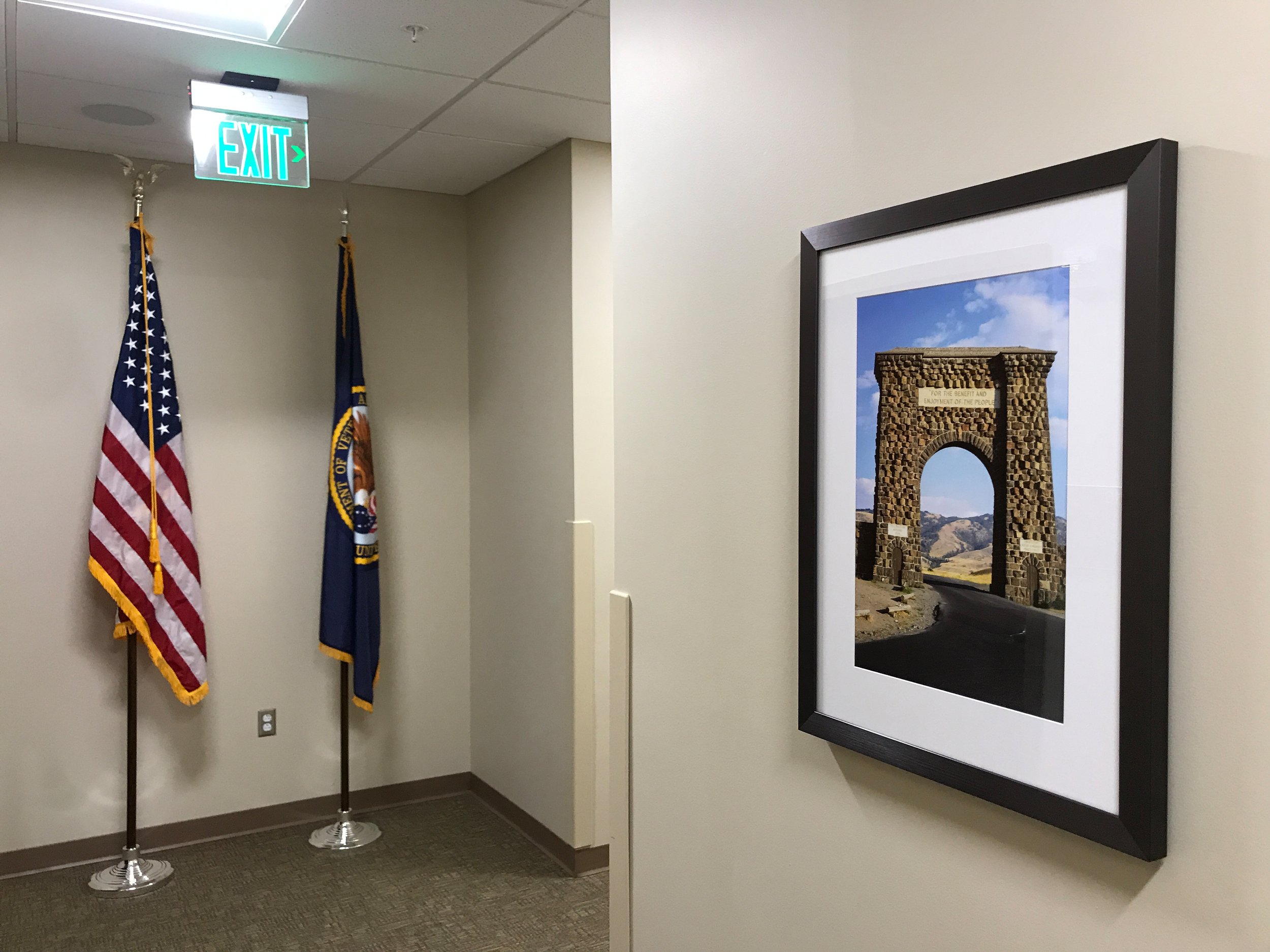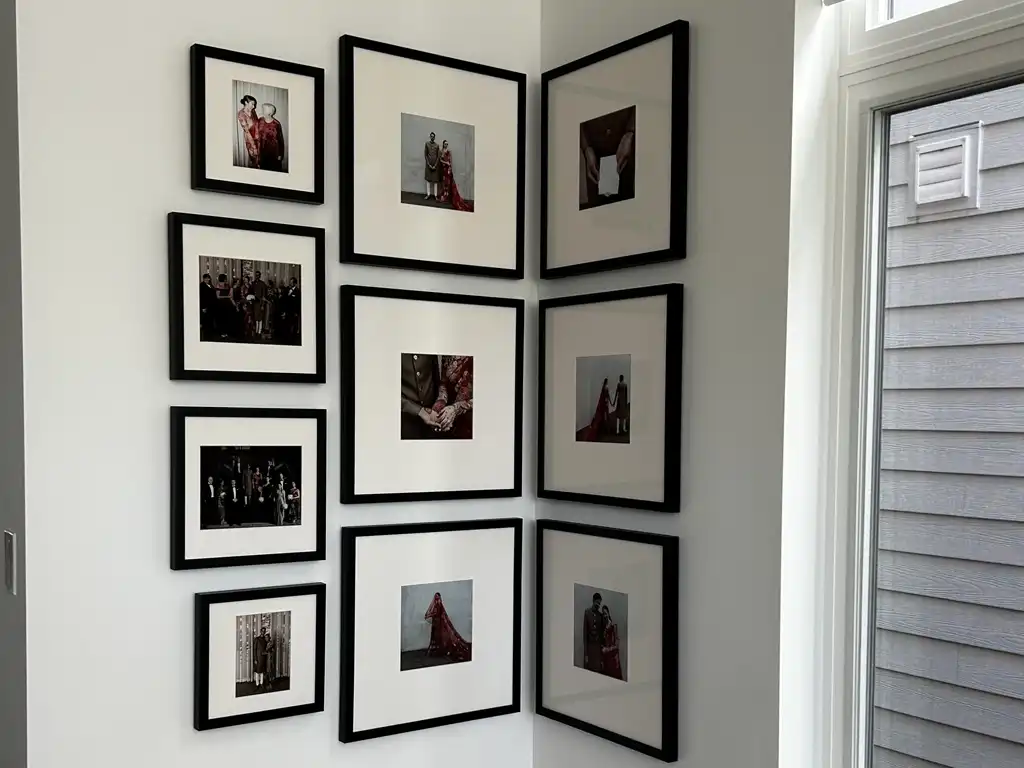Studies have shown that art in the workplace improves productivity and employee experience. Art, such as strategically designed gallery walls, can increase creativity, reduce workplace stress, and create a more positive work environment. Artwork can also affect clients that enter your space. It can help them humanize your brand, making it easier for them to relate to your team. This, in turn, can increase the likelihood of a partnership or contract for work. But how can you create a gallery wall that enhances your office and reap the benefits? Here, we’ll provide you with some gallery wall ideas and tips on hanging art around your workspace.
8 Tips for Designing a Gallery Wall in Your Office
Rather than just purchasing random art and photos, putting them in picture frames, and nailing them to the wall, you’ll want to strategize. To help you get started, here are some gallery wall tips and layout ideas to consider.
1. Determine Which Empty Wall Will Become the Perfect Gallery Wall
First, assess your space. Which area is ideal for hanging a gallery wall? Do you want it in the entryway to your office, in a common area, or in your office? Choosing the right blank wall to arrange art pieces can make a huge difference in how your gallery wall feels, so don’t rush into it. Assess your needs and determine which area would allow for the most benefits of framed art.
2. Measure Your Wall Space
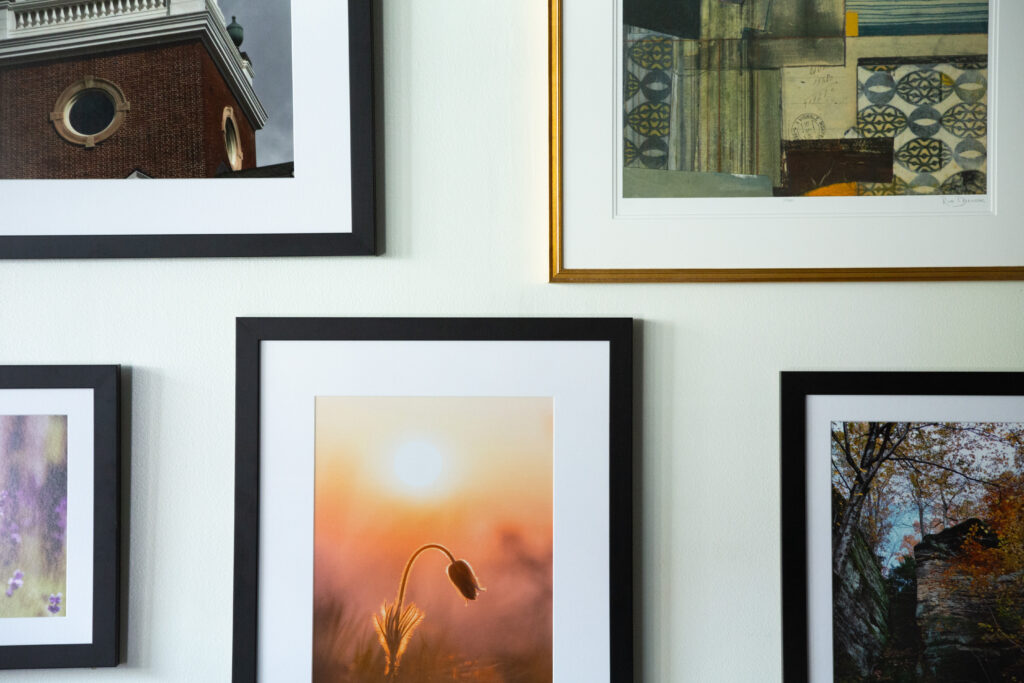 Next, measure the dimensions of your future art wall to get a good idea of how many pictures will fit and which sizes will look best. Do you want to fill the entire space or just work within the center of the wall or a focal point? Regardless of size, there are pieces of art that can accommodate different gallery wall layouts, so don’t be afraid to think outside the box.
Next, measure the dimensions of your future art wall to get a good idea of how many pictures will fit and which sizes will look best. Do you want to fill the entire space or just work within the center of the wall or a focal point? Regardless of size, there are pieces of art that can accommodate different gallery wall layouts, so don’t be afraid to think outside the box.
3. Try to Come Up with a Theme
Take time and think about creating your gallery wall by developing a general theme. This theme can center on the style of the pictures, the color palette, the geographic area, or even photographs from an event like a wedding. Align the theme with your business or branding colors to maintain relevance in your gallery wall. Alternatively, opt for a more eclectic theme that gives your gallery wall a slightly random feel. The choice is yours, depending on your objectives.
4. Choose an Accent Piece for the Anchor
The largest piece on your framed wall will be the anchor or accent. This is the picture you’ll arrange all the other pieces around, so take the time to choose something that really speaks to you. When you start with the largest piece, you’ll get a better idea of the height and width requirements for the other pieces to curate the rest of your gallery wall.
5. Don’t Be Afraid to Mix Horizontals with Verticals
A mix of horizontal and vertical frame styles can still result in a symmetrical look. It all comes down to how they’re arranged on the wall. Play around with different sizes and orientations to help you see what looks best.
6. Think About Placement and Layout
Once you have chosen some of the pieces for your art collection, consider how you want to arrange them. The placement and layout of your gallery wall can vary, impacting the overall feel—organized or a bit chaotic. Three popular layout styles include uniform grids, eclectic or asymmetrical designs, and square or rectangular arrangements.
Uniform Grid — This will provide a very uniform (homogeneous) style. It is orderly, with all the art having the same dimensions, using the same corresponding framing treatments, and hung with equal spacing.
Eclectic Asymmetrical Designs — You can use an eclectic asymmetrical (heterogeneous) design for a more free-spirited and relaxed feel. This involves arranging your gallery wall in a random style. Spacing between pictures is usually consistent to maintain order, while frame styles, picture sizes, and layout borders vary.
Square or Rectangular Layouts — If you want a bit of both worlds, square or rectangular layouts are a good choice. This creates a defined border for the gallery wall, but the pictures arranged inside can vary based on size, orientation, shape, and frames.
7. Consider Your Custom Framing Options
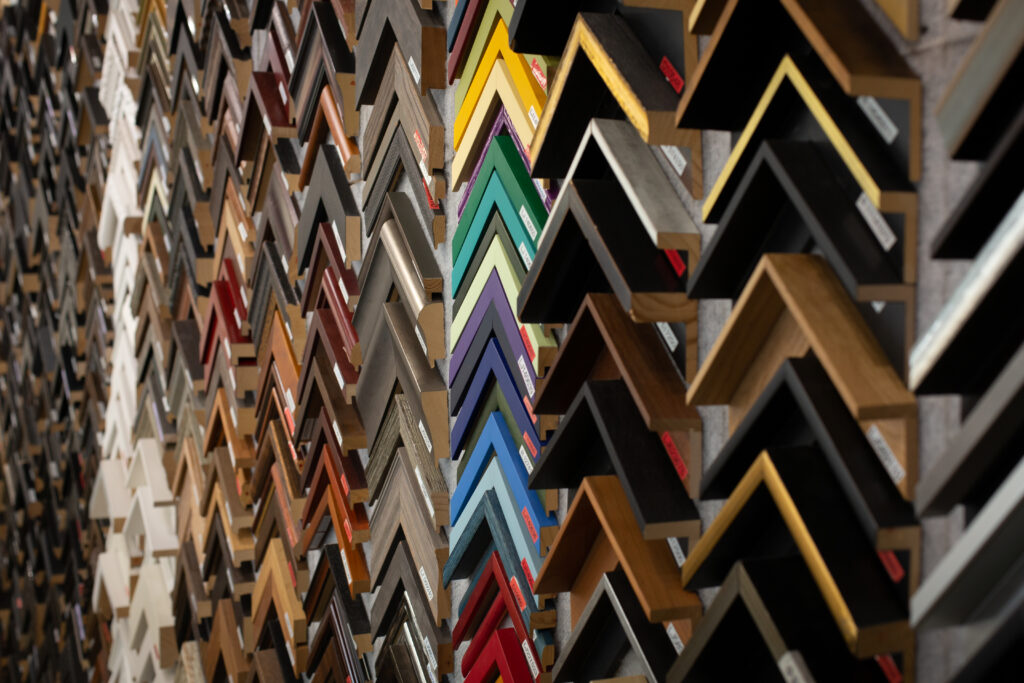 Once you have your artwork and know which layout you want to use, it’s time to look at custom framing options. For a more homogeneous style, you’ll want the frames to be uniform in size with similar colors and styles. All black frames or white frames are a good idea to keep things sleek. For something a bit more relaxed, try playing around with different frame shapes, sizes, and colors. A professional custom framer can help you choose the best options for the entire wall.
Once you have your artwork and know which layout you want to use, it’s time to look at custom framing options. For a more homogeneous style, you’ll want the frames to be uniform in size with similar colors and styles. All black frames or white frames are a good idea to keep things sleek. For something a bit more relaxed, try playing around with different frame shapes, sizes, and colors. A professional custom framer can help you choose the best options for the entire wall.
8. Enlist the Professionals
To achieve the best gallery wall, enlist professionals to help with everything from art curation, framing, delivery, and installation. An experienced frame installer is worth their weight in gold. They can help you determine the best location to present your wall art, including lighting and viewing height considerations.
Peterson Picture Co. provides art curation options that fit any art, framing, and budgetary requirement. We proudly collaborate with several designers and architects to research, refine, locate, and acquire distinctive visual art for all projects and maintain up-to-date on current art trends, aesthetics, and popular design motifs. Art packages developed by Peterson Picture Co. are tailored to fit a professional art buyer’s unique style or established institutional goals.
At Peterson Picture Co., we take pride in surpassing expectations and catering to the specifications outlined by our customers’ design teams. We also offer secure delivery and installation services so you can start enjoying your new gallery wall in no time. When you’re looking for unparalleled craftsmanship, cost-effectiveness, and a partner dedicated to transforming your vision into reality, turn to Peterson Picture Co. Contact us today and experience the difference of framing with passion and precision.


